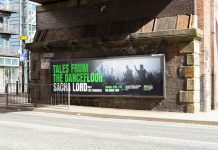One of LS Lowry’s earliest “Going to …” paintings will go on sale for the first time in over 50 years, and is expected to sell for up to £3m
Painted in 1928, Going to the Match is among the earliest known, if not the earliest, depiction of one of L.S. Lowry’s most iconic and timeless subjects – that of spectators thronging to a sporting occasion.
Famed for his images of football, it is significant that it is a rugby match he chose to paint first, no doubt testament to the importance of the Rugby League to Northern communities. One of only a small handful of paintings of the sport known to have been painted by Lowry, the extremely rare work is an exceptional example of the beloved artist’s unique visual language. In this painting, the red flag seen flying by the ground, as well as the red scarves worn by several of the crowd members, hints at the Salford Red Devils – Lowry’s local team.
Having remained in the same family collection since 1972, and only exhibited once before now in 1966, Going to the Match will be offered with an estimate of £2,000,000 – 3,000,000 as part of Sotheby’s inaugural British Art: Modern/ Contemporary live-stream auction this summer. The painting will travel to New York, Edinburgh and Dublin for public exhibitions ahead of the auction, before going on view at Sotheby’s New Bond Street from 22 – 29 June.
In August 1895, twenty-two clubs met at the George Hotel in Huddersfield to form the Northern Rugby League, leaving the Rugby Union in order to enable working class players to be compensated for wages lost when playing.
During the game’s development over the course of the twentieth century, Rugby League
became deeply entrenched in the social and cultural fabric of the north of England and matches drew enormous crowds, with the culmination of each season being the Challenge Cup Final which continues to this day.
The work was painted in the same year that a 41-year-old Lowry finished a thirteen year stint of attending art school part time – starting with evening classes at the Manchester School of Art and ending at the Salford School for art – while working around his daily job as a rent collector.
This early masterpiece demonstrates the key influence of his art teacher in Manchester, French Impressionist Adolphe Valette, as Lowry takes up the mantle set by Manet, Pissarro, Degas and Van Gogh in their recording of modernity from the 1870s. In France, the focus was on the parks, boulevards, tramcars and grittier aspects of life on the edges of the city, whilst Lowry took Manchester’s industrial environment and atmosphere as his
lifelong subject.







